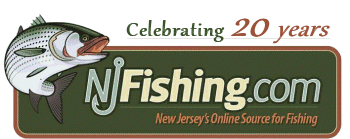 Re: Lake Hopatcong Grass Carp:
Re: Lake Hopatcong Grass Carp:
Triploid Inspection
The USFWS only provides the inspection and certification service to producers that want to cooperate, and participation is completely voluntary. All grass carp in an identified lot, offered for sale, will have been individually test inadvertent mixing of triploids and diploids and that numbers of fish are appropriate for the orders to be certified. The inspector will channelize (at a minimum) every tenth fish during the inspection of the 120-fish sample of alleged triploid grass carp. Any sample with a questionable monitor reading will also be channelized, and any questionable data resulting from channelization will be considered non-triploid. If all 120 fish tested are triploid, the inspection is complete. If a diploid is found in the course of testing the 120 fish sample, the lot fails certification. All fish in that lot must be retested, individually, by the producer, before another inspection of that lot of fish is rescheduled for certification inspection. ted by the producer using coulter counter techniques before a USFWS Triploid Grass Carp Inspection will be performed. The USFWS Inspection consists of a retesting by the producer, in the presence of the inspector, of 120 individuals randomly selected by the inspector from the identified lot of alleged 100 percent triploid grass carp. The inspector will view the group of fish that is to be certified, verifying that the group is isolated in a containment unit at least 100-ft. away from the production ponds.
This is the sampling that the USFWS does but isn't required, I for one believe that there can be natural reproduction. As previously noted that they have a life span of 10 yrs. I know of a body of water that still has them after 30 yrs. and I fish a lake that has had them for at least 15yrs. This lake hasn't had any weeds for the last ten yrs. with a dramatic reduction in the fish population. The fish population has also been affected by the cormorants but where there were a dozen or more some yrs. ago, now there night be a half dozen or less. Another observation is that when the weeds are gone, they will consume leaves and grass cuttings that fall into the water.
States control the stocking of the grass carp very tightly and my understanding is that they fear if the carp get out of the body of water, who knows where they will go and the harm they might do. With all of the invasive species out there do we really want another?
Last edited by oelgnal1; 02-19-2018 at 01:17 AM..
|










